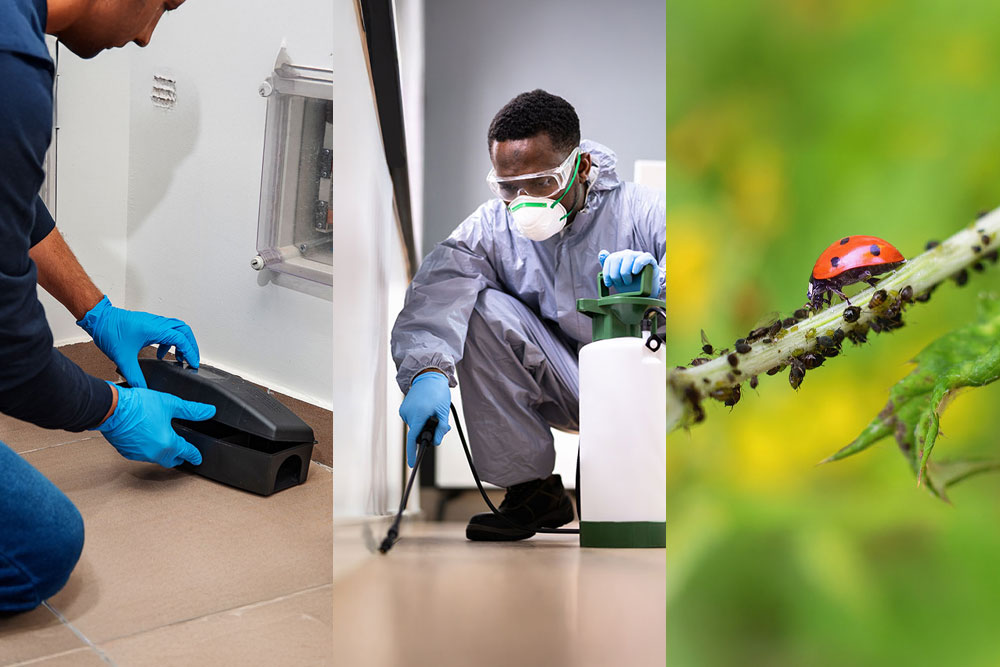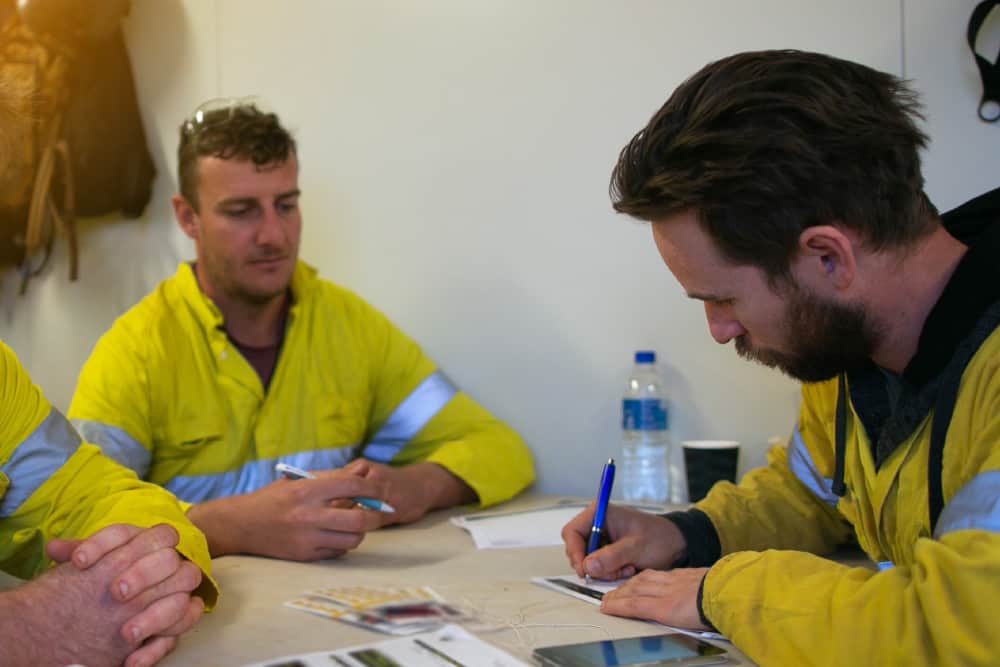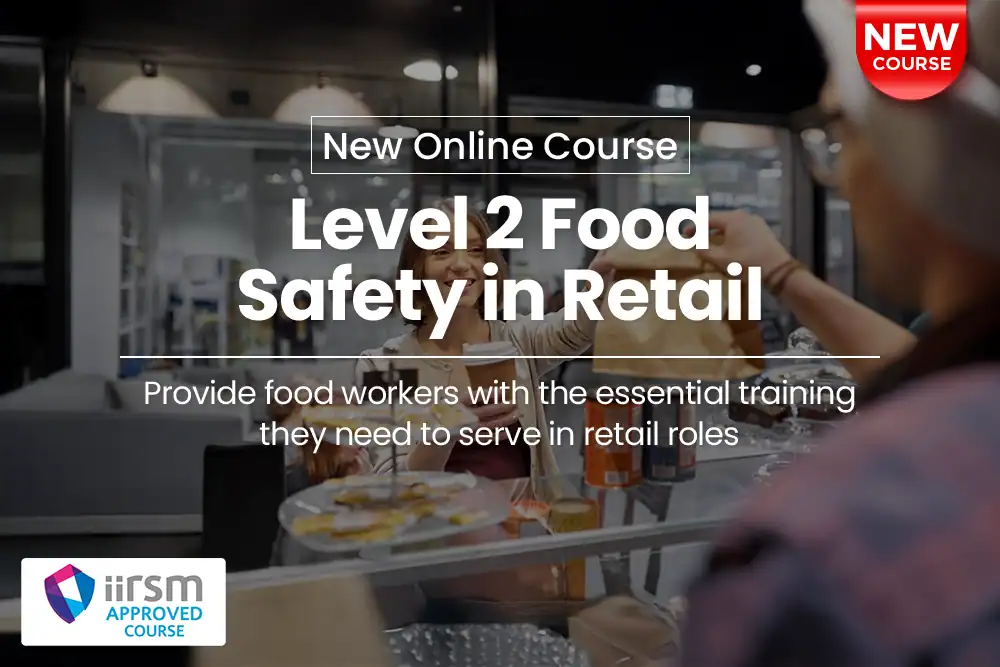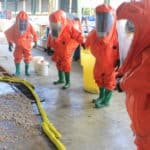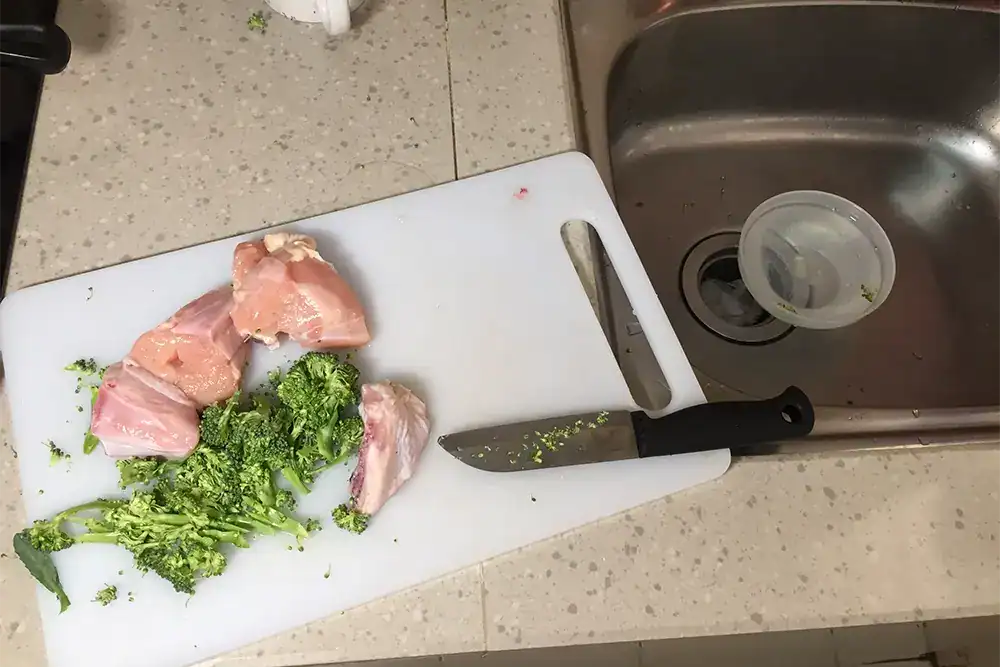
Cross-contamination is the unintentional transfer of harmful bacteria from one person, surface, or food to another.
It is one of the leading causes of food poisoning, so it must be strictly managed in any commercial kitchen.
This blog introduces the main types of cross-contamination and how they can be prevented, plus other hygiene essentials for food businesses.
Key Takeaways
- Cross-contamination is the transfer of harmful bacteria, allergens or chemicals from one surface, person or food to another.
- The Food Standards Agency (FSA) advises strict separation of raw and ready-to-eat foods, thorough cleaning, and complete staff hygiene.
What Is Cross Contamination?
Cross-contamination is when harmful bacteria move from one surface, person, or food to another.
It’s one of the leading causes of food poisoning and a serious risk in home and especially commercial kitchens.
Commercial kitchens prepare multiple dishes simultaneously and at high speed. Without good hygiene or an effective food safety system, bacteria can easily be transferred from one item to another. For example, raw and cooked food might be prepared on the same chopping board, or uncooked meat stored above ready-to-eat items in the same refrigerator.
Food Hygiene Courses
Equip food workers with essential training for their role. Our online food hygiene courses provide an understanding of food safety, HACCP systems and cross-contamination. All courses award independently recognised certificates for proof of training.
Types of Cross Contamination
1. Food-to-Food Contamination
This happens when bacteria move directly from one food item to another. It’s most likely to happen when raw foods touch cooked or ready-to-eat foods.
Example: Storing raw and ready-to-eat foods together in the same container, or placing cooked food back onto a plate that held raw food.
The most likely consequence is food that should be safe to eat becomes contaminated with harmful bacteria, leading to foodborne illness.
2. Equipment-to-Food Contamination
This happens when the same utensils or equipment are used for raw and cooked foods without proper cleaning in between.
Example: Using the same chopping board for raw meat and then for ready-to-eat vegetables.
The most likely consequence is that harmful bacteria end up on food that is already cooked and ready to eat.
In professional kitchens, this risk is managed by keeping multiple sets of chopping boards, knives, and other utensils, each designated for a specific stage of production or type of ingredient.
3. People-to-Food Contamination
This happens when food handlers transfer bacteria from themselves to food. In busy kitchens, the risk of people-to-food contamination is higher because staff move quickly between tasks and handle different ingredients in succession.
Example: Moving from food prep to food plating without washing hands in between.
The most likely consequence is that germs are passed from people directly to food being served, bypassing kitchen controls.
4. Environment-to-Food Contamination
This happens when the wider kitchen environment introduces bacteria onto food. In professional kitchens, constant activity makes it harder to maintain surfaces, storage areas, and even air quality to a safe standard.
Example: Storing food near bins, placing it on dirty counters, or allowing pests into food storage areas. Even condensation or dust in poorly maintained spaces can contaminate food.
The most likely consequence is that food becomes unsafe before preparation even begins, as bacteria are already present on surfaces or ingredients.
How to Avoid Cross-Contamination
Using separate spaces, surfaces and equipment for raw and ready-to-eat foods is the most effective way to prevent cross-contamination.
There are also other steps food businesses should take at each stage of production:
When Preparing Food
Always separate raw food from ready-to-eat food.
- Wash your hands with soap and warm water before preparing food and after touching raw meat, fish, or poultry.
- Wash fruit and vegetables thoroughly before eating or cooking.
- Do not wash raw meat, fish, or poultry; you only risk spreading bacteria through splashes.
- Use different chopping boards and utensils for raw meat, fish, poultry, fruit and vegetables, and ready-to-eat foods like salads or cheese.
- Keep raw food covered and away from ready-to-eat items, including its packaging.
When Cooking
Cook food thoroughly so bacteria are destroyed.
- Make sure meat, poultry, and other high-risk foods are cooked at the correct temperature for the recommended time.
- Never return cooked food to a plate or surface that held raw food.
While Cleaning
Clean and disinfect work areas, equipment, and utensils properly.
- Clean and disinfect work surfaces, chopping boards, and equipment before you start and after handling raw food.
- Use disinfectants and sanitisers that meet officially recognised standards, and follow the manufacturer’s instructions.
- Use separate cleaning materials (cloths, sponges, mops) in areas where ready-to-eat foods are prepared.
- Replace reusable cloths and sponges regularly, or use disposable ones.
While Serving
Handle ready-to-eat food with extra care.
- Use separate storage facilities, preparation areas, clothing, and staff for ready-to-eat food wherever possible.
- If raw and ready-to-eat foods must be handled in the same area, always disinfect the area between uses.
- Always use clean serving utensils and never mix spoons or tongs between dishes.
When Storing
Store raw food separately from ready-to-eat food wherever possible.
- Use separate fridges for raw and ready-to-eat foods if possible.
- If you only have one fridge, keep raw food in sealed containers below ready-to-eat foods to prevent juices from dripping down and causing cross-contamination.
- Keep your fridge at 5°C or below, and avoid overloading it to ensure cold air can circulate and keep every item cool.
Professional Equipment and Staff Hygiene
Commercial kitchens must follow stricter controls.
- Staff must wash their hands using a recognised technique. Hand gels can be used after handwashing, but not as a substitute.
- Gloves are not a replacement for handwashing. If gloves are used, they must be changed as often as hands would be washed, and hands must be washed when gloves are removed or replaced.
- Complex equipment such as vacuum packers, slicers, and mincers should not be used for both raw and ready-to-eat food. If switching use, machines must be dismantled, cleaned, and disinfected.
How Training Helps
Our online food hygiene and safety courses provide practical guidance on preventing cross-contamination and other essentials of safe food handling.
Each course is independently recognised and awards a digital certificate, giving you evidence that training has been completed and understood, as required by law.
Enrol in Food Hygiene Training today to build safer habits in the kitchen and reduce the risk of contamination.
